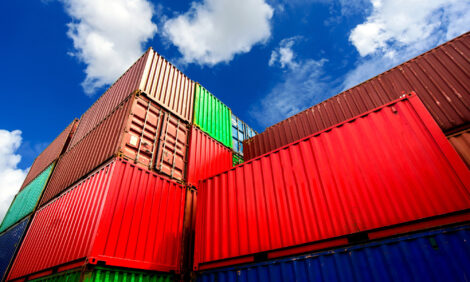



Dairy Farmers Investing to Manage their Environmental Impact
NEW ZEALAND - Dairy industry leaders say dairy farmers are investing millions of dollars in managing their environmental impact and taking their responsibilities seriously.DairyNZ chief executive Tim Mackle says dairy farmers, through the milksolids levy they pay to DairyNZ, have boosted their industry environmental investment by 61 percent this financial year to NZ$ 11 million per annum.
Dr Mackle says it is not surprising that a public attitudes survey just released and funded by Fish and Game paints a negative picture of public attitudes to dairy farming. He doesn’t see the survey work as particularly rigorous or important. “They are playing politics in an election year and dairy farmers are the convenient football to kick around,” he says.
“I think New Zealanders understand that dairying is important to the success of the New Zealand economy and that dairy farmers are an important part of our community. They just want to see the industry acting responsibly and managing its impact,” he says.
“We don’t need another survey to tell us what we already know - that New Zealanders care what the dairy industry is doing to live up to their expectations around environmental stewardship. We’re already acting on that concern in a range of ways - and have a strategy and plan for ensuring responsible and competitive dairy farming including a new, stronger Sustainable Dairying: Water Accord. We launched all that last year,” he says.
“Farmers have certainly recognised the need to lift their game in investing in industry actions above and beyond their usual on-farm investments to show leadership. Across the industry we have signed up to a new water accord and strategy and we’ve been putting our money behind meeting our commitments in those agreements.
“We have programmes and investments in place with regional councils in every major dairying region in the country - from Northland to Southland and every place in between. We need to work harder at making sure more New Zealanders have a better understanding of all that is being done. Farmers are certainly paying their fair share,” he says.
“Most dairy farmers are doing a great job. Industry standards for dairy farmers, no matter where you farm or what dairy company you supply, have now been set and are being implemented through company supply agreements with dairy farmer support. We’re still let down by a few bad performers but that’s like any industry,” he says.
DairyNZ strategy and investment leader for sustainability, Dr Rick Pridmore, says in Southland, dairy farmers, through DairyNZ, are spending NZ$ 1.1 million each year on environmental work with the council and in the Waituna catchment. In addition, the on-farm investments by Waituna Catchment dairy farmers so far sit at around NZ$ 1.5 million, with another additional NZ$ 2 million of work still in the pipeline.
“Where we’re part of the problem, we’re investing in solutions with councils and communities - generally at a catchment level. Just ask any regional council. And this is above and beyond what individual dairy farmers are spending to meet their regulatory requirements or paying as rates including targeted rates in some areas.”
He says dairy farmers, through DairyNZ, are partnering with councils on projects and spending big money. Last year this included work with Horizons Regional Council ( NZ$ 500,000), Waikato River Authority ( NZ$ 1.2 million), Environment Canterbury ( NZ$ 1 million), Northland Regional Council ( NZ$ 400,000) and NZ$ 100,000 with the West Coast Regional Council.
“Fonterra dairy farmers have fenced 22,000 kilometres of waterways around the country now and that is all GPS mapped. Depending on how much riparian planting and maintenance is included, we estimate farmers have spent NZ$ 100-200 million to achieve this, reflecting around NZ$ 5-10,000 per kilometre,” he says.
“DairyNZ is also investing dairy farmers’ money in leading New Zealand’s largest catchment project in the Waikato River above Karapiro. This NZ$ 2.1m project, co-funded by DairyNZ, Waikato River Authority and central government, is delivering environmental management plans to all 700 farmers in the catchment.
“Each Sustainable Milk Plan for those farmers will cost us NZ$ 2,400 to produce, and out of that will fall a range of actions and investments that the farmer will spend on their farms. That includes installing water meters on most of these 700 farms at a cost to farmers of around NZ$ 1.5 million. Other examples are Taranaki farmers who are voluntarily investing an enormous amount of money and time to ensure waterways on the Taranaki ring plain are protected with fences and vegetation. Around NZ$ 80 million has been spent on plants, fencing and contractors since the project began. That's a fantastic achievement.
“So we can point to an increasing and substantial investment by dairy farmers that shows how much they are all paying in a range of ways to manage their environmental impact. On top of that the dairy industry supports the Government’s plans for farming within environmental limits that is rolling out across the country. This will address the bigger issue of managing land use change. Already in Canterbury, there will be ‘no grow’ areas for dairying in that region as part of implementing its new land and water policies,” says Dr Pridmore.
TheCattleSite News Desk


